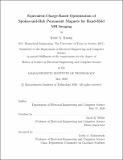| dc.contributor.advisor | Jacob K. White. | en_US |
| dc.contributor.author | Kuang, Irene A. | en_US |
| dc.contributor.other | Massachusetts Institute of Technology. Department of Electrical Engineering and Computer Science. | en_US |
| dc.date.accessioned | 2020-09-15T22:01:27Z | |
| dc.date.available | 2020-09-15T22:01:27Z | |
| dc.date.copyright | 2020 | en_US |
| dc.date.issued | 2020 | en_US |
| dc.identifier.uri | https://hdl.handle.net/1721.1/127507 | |
| dc.description | Thesis: S.M., Massachusetts Institute of Technology, Department of Electrical Engineering and Computer Science, May, 2020 | en_US |
| dc.description | Cataloged from the official PDF of thesis. | en_US |
| dc.description | Includes bibliographical references (pages 45-48). | en_US |
| dc.description.abstract | The complex infrastructure needed for high-field magnetic resonance (MR) scanners has relegated this very safe, and remarkably revealing, clinical tool to high-end hospital care. But for many potential applications of MR -- point-of-care diagnostics, routine screening or classroom experimentation -- image quality is far less critical than portability and low cost. Emphasizing cost and portability over image quality has led researchers to focus on low-field MR, of the order of tens to hundreds of millitesla, generated using arrays of inexpensive permanent magnets. In this thesis, I describe a method for differentiating the potential from end-cap equivalent charges to efficiently compute the fields from bar magnets in a hundred- bar spokes-and-hub permanent magnet topology and demonstrate its potential as a low-cost MR imager. | en_US |
| dc.description.statementofresponsibility | by Irene A. Kuang. | en_US |
| dc.format.extent | 48 pages | en_US |
| dc.language.iso | eng | en_US |
| dc.publisher | Massachusetts Institute of Technology | en_US |
| dc.rights | MIT theses may be protected by copyright. Please reuse MIT thesis content according to the MIT Libraries Permissions Policy, which is available through the URL provided. | en_US |
| dc.rights.uri | http://dspace.mit.edu/handle/1721.1/7582 | en_US |
| dc.subject | Electrical Engineering and Computer Science. | en_US |
| dc.title | Equivalent-charge-based optimization of spokes-and-hub permanent magnets for hand-held MR imaging | en_US |
| dc.type | Thesis | en_US |
| dc.description.degree | S.M. | en_US |
| dc.contributor.department | Massachusetts Institute of Technology. Department of Electrical Engineering and Computer Science | en_US |
| dc.identifier.oclc | 1193027539 | en_US |
| dc.description.collection | S.M. Massachusetts Institute of Technology, Department of Electrical Engineering and Computer Science | en_US |
| dspace.imported | 2020-09-15T22:01:27Z | en_US |
| mit.thesis.degree | Master | en_US |
| mit.thesis.department | EECS | en_US |
